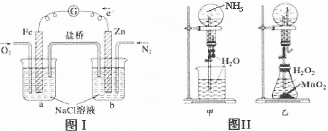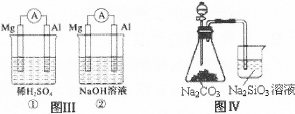问题
选择题
下列叙述正确的是


A.图I装置中通入N2和O2的作用是相同的
B.图Ⅱ中甲、乙两装置产生喷泉的原理一样
C.图Ⅲ①装置中镁片是原电池的负极;②装置中镁片是原电池的正极
D.图Ⅳ分液漏斗盛硝酸能证明非金属性N>C>Si,盛硫酸能证明非金属性S>C>Si
答案
答案:C
题目分析:A、O2发生还原反应,而N2不参加负极反应,错误;B、氨气溶于水,H2O2分解产生大量O2,错误;C、Mg比Al易与稀硫酸反应,则①中Mg是负极,Al才能与NaOH溶液反应,则②中Al是负极,正确;D、硝酸具有挥发性,因此不能证明非金属性N>C>Si,错误。
